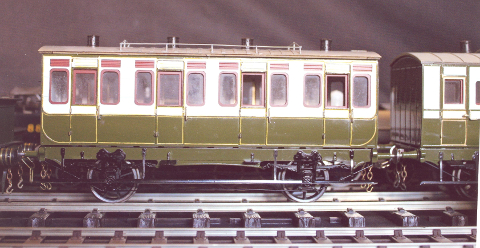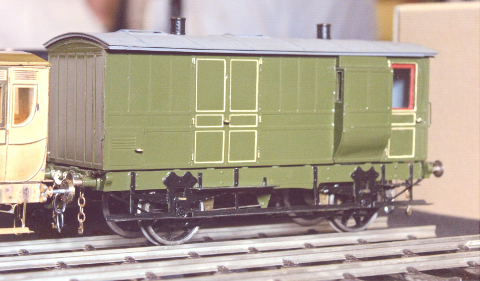
LNWR four-compartment composite carriage about 1865 in the original livery, as established by Kenneth Wood from scrapings taken from a surviving door found on a grounded body at Wappenham, near Towcester. It has a rack for luggage on the roof, although there is some doubt about how long this practice persisted. The lining shows an allusion to the ‘stage coach’ style of earlier Firsts, but in most respects this is a ‘modern’ carriage of a style that persisted into the 20th century. The model is built from a John Dale etched brass kit, which is now available from Mercian Models.

London & Birmingham Railway break van, based on an engraving discovered in the Great Northern Railway archive by Tadeusz Opyrchal. This might be the first break van used on a main-line railway and is attributed to J. Wright & Co, London. Wrights had moved to Birmingham by 1845 and this van may date from the opening of the railway in 1838. A puzzle at first is the lack of cut outs in the side for the guard to look out along the train, a question that resolves itself once it is realised that the ballast for the van is held in a large water tank under the floor. As a result, the floor level is raised by about 18in, meaning that the guard could easily see over the van roof. Headroom inside the van body would have been very limited and it is not known if the now ubiquitous coal stove was provided. The water ballast may not have been satisfactory because a similar but later LNWR van illustrated by Clark in Railway Machinery published in 1855 has iron weights and a lower floor level, complete with cut-outs in the sides for the guard to look over. In common with other early L&BR vehicles, the break van has sprung buffers at one end only. It's believed that the sprung buffers faced the front of the train and that vehicles were turned on the ubiquitous wagon turnplates found in every station to face the direction of travel. Brake application is by means of the large lever which must have required considerable force to operate. All later break vans seem to have a screw arrangement.